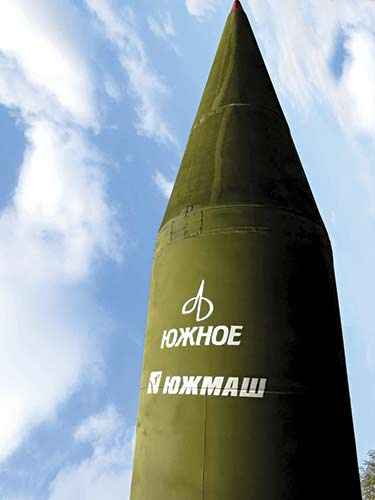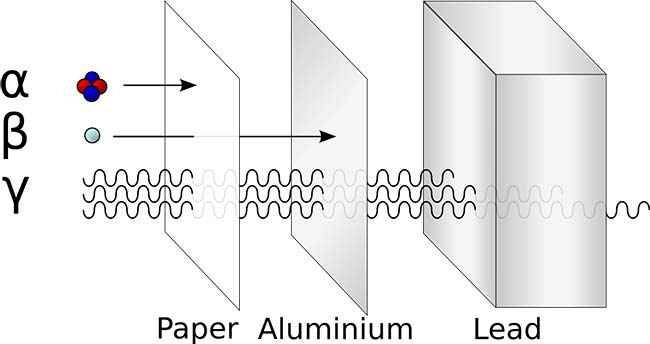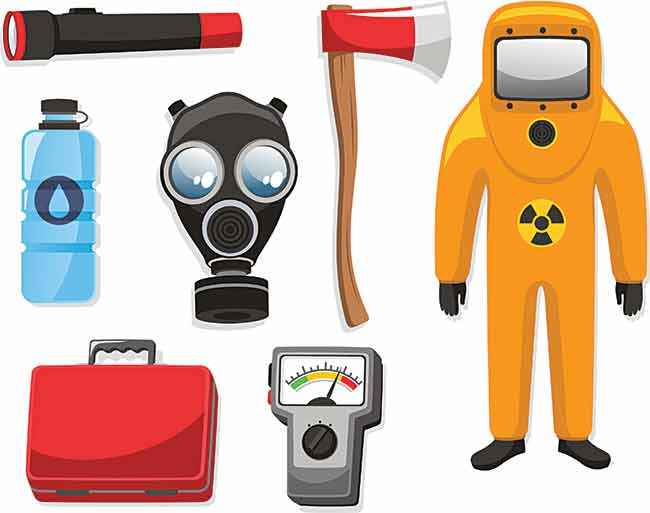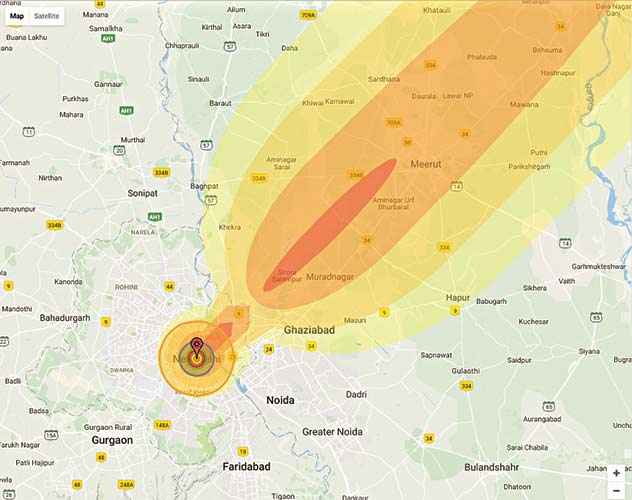If India is under nuclear attack, here’s how you can survive
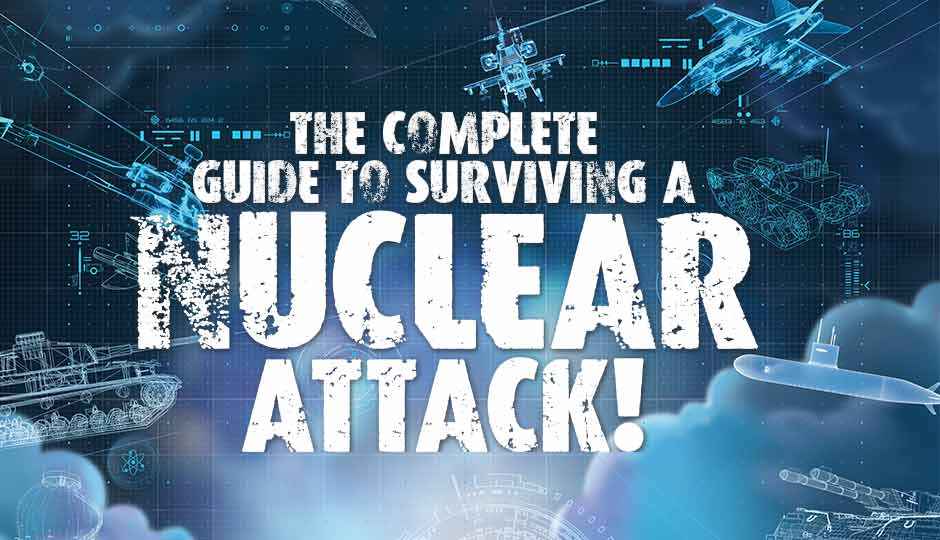
All politics lead to war
Given the current state of affairs with our neighbours, war is no longer an unlikely scenario. Tensions are high with Pakistan and it’s no secret who China is posturing support. Russia too is getting into the fray with accusations about sabotaging the US presidential elections flying about, and a steady military build up near the Polish and Syrian borders. We’ve been one of the largest peaceful nations till now, but everything changes sooner or later. If and when the missiles start flying, chances are they’re gonna be nuclear!
 Survey
Survey
From Russia, with love
Now consider the inevitable has happened
With all due respect to Einstein, whether you’re alive in this paragraph depends on the multitude of factors too vast to enumerate. Let us abbreviate it to plain old luck. For a half-megaton bomb, the fireball radius is slightly more than 1 km and the shock and heat wave can do damage in an 8 km radius, and that’s not even taking the radiation into account. You weren’t close enough to be engulfed in the crater formed by the fireball, internally squished by the shockwave, or vaporized by the heatwave, but close enough to the blast that your whole life has changed (and may be drastically shortened at any moment since everything around you is on fire). You were forewarned. Luckily, you had read this article, and jumped in the drain as soon as you saw the light. Take a moment to thank us for telling you how a large enough water body can shield you from a blast of ionizing radiation. A more important characteristic of the water body is that these days they are close enough, thanks to the municipal department for the clogged drains. Thick enough concrete and steel will protect you from radiation too, but not so much from the shock wave of the thermonuclear bomb. Instead they may bury you.
Of course, you can’t stay submerged for long among the burning floating garbage. You protected yourself from the blast radiation, but now you have to make sure you escape the residual radiation. You make your way out, gaping at the iconic larger-than-life mesmerizing mushroom cloud. All around, everything ignitable is aflame and about to coalesce into a firestorm. The random kid who mimicked your dive into the drain is now following you. Soon you are asked about the burning smell. Remember to tell the little one, “It’s just rubber. Let’s put our backs to the cloud and keep going!” You can’t find your family if you’re dead.
You see more people among the debris than you expect, but the smell gets stronger as you approach them and most of them walk funny. Some occasionally let out wails and moans. A few minutes ago most of them were rioting and looting as law was suspended by public panic. Those who took shelter indoors are buried under rubble. As far as the eye can see, all structures have fallen and only dust rises. You need to find shelter soon, a real shelter that will protect you from radiation, and hopefully some able and intelligent company, at least till aid arrives. Even though you’re upwind of the blast site, it’s not safe to be exposed this long.
Luckily there’s some sort of building up ahead. Sadly, in our country not many buildings have basements, but even ground level shelter is better than no shelter. Black rain is about to fall.
The Problem of Radiation and LD50
Ionizing radiation is bad because it disrupts our DNA. The sole physiochemical purpose of all the core molecules of life is to copy themselves before they die so that the metastructure can survive, and radiation messes with this replication. To save ourselves from it, we should know, what is this dreadful radiation and where does it come from?
Ionizing radiation is simply an emission of high enough energy that can knock out an electron or otherwise change the configuration of an atom with which it collides, thus hampering the molecule that it is a part of. It is given out during the nuclear fission blast along with the fission products (blast radiation), and later by spontaneous decay of the neutron-heavy daughter elements (residual radiation).
Ionizing radiation produced in nature is mainly of three types – alpha, beta and gamma. Alpha and beta radiation can be stopped by clothing, but gamma radiation needs a lot more than that! The blocking effect of materials on gamma radiation is quantified in the halving-thickness, i.e- the thickness that would absorb 50% of the radiation. Any shelter should have at least 10 layers of halving thickness to be effective. For example, packed earth has a halving thickness of ~10cm for gamma rays, so hiding a meter under the ground will reduce the intensity of the radiation 1024 times.
Radiation exposure is measured in Grays (Gy). 1 Gy is defined as radiation energy of one Joule absorbed per kilogram of mass. LD50 is the lethal dosage amount that would be fatal to 50% of the population. For the average healthy human LD50 is estimated at 3.5 Gy, and death is pretty much certain after exposure to doses higher than 6-7 Gy. Besides the radiation from the initial blast at ground zero, the danger of radiation is from neutron heavy fission products delivered over time by the fallout. A thermonuclear bomb vaporizes a lot of things in the explosion, resulting in the large cloud of dust and particulate matter that floats up in the hot air, to which radioactive molecules attach. The gradual deposition of this radioactivity (piggybacking on dust) over a large area is called fallout. In the first few weeks following the nuclear hit, fallout can result in a large area being uninhabitable. However, 70% of the millions of vaporised people were water, and combined with other sources of dihydrogen oxide, can lead to heavy enough droplets forming to cause rain locally within a few hours of the blast. This radioactive soot rich rain is what is called black rain.
Ionizing radiation
Fallout: Not the game
There’s nothing like surviving a nuclear blast to put the essentials of life into perspective. Good old hunker down in the foxhole kinda stuff. Alpha and beta rays may not be able to get to you from the outside, but they can wreak havoc from inside your lungs or gut, so avoid the dust as much as possible. There might also be the stray lunatic so steel yourself for some serious human-hurting if needed. As you try to hide or get away from the black rain here’s what you need to think about:
Shelter – This should be your top most priority. The ideal shelter is an underground bunker built and stocked for this very purpose, but most likely, you’ll have to think on your feet. A building like the one you are in right now will shield you for the moment, but soon there will be decaying dust spewing radioactivity in every direction. If war had broken out some time before the nuclear strike, there may be blast shelters dug deep into the ground where you can camp. If buildings are all you have to hide in, find the largest one possible and go as far in as possible. The idea is to put as many walls (or as much material) as possible between you and the radioactive particles settling outside. While ventilation is normally a good thing, a room without any drafts to bring in the radioactive dust would be better. If the building is damaged, cover up holes with anything you can find lying around like cupboards, sheets of tin, etc. Also, choose a location that will not fill up with rainwater. If you have a few friends and a working crane, knock out one of the dispensers at a petrol pump after emptying it (which rioters may have already done for you) and hide in the storage tank buried underneath.
Another important factor, once you find a suitable shelter, is how long you have to stay there. While radioactivity does decrease with time, it’s best to stay shielded for the first 48 hours minimum and do not venture out unless absolutely unavoidable. The area affected by fallout is greatly affected by weather and wind conditions, so you can start to leave the shelter within the week if you are upwind. If you are downwind, prepare to be holed in for a couple of weeks at the least!
Your complete Fallout survival kit
Water and Food – You can survive three weeks without food but only three days without water. So you may have to leave the shelter to find potable water if you’ve run out. Urine is safe to drink upto three times before it becomes toxic, in case you get really thirsty before the first 48 hours are up. Even after the first 2-3 days, don’t expose yourself to radiation for more than 30 minutes unless you’re being evacuated. Under no circumstance should you ingest anything that is exposed to air. Anything in an airtight container or package is good to eat, so head to wherever the nearest grocery shop or supermarket was. Fruits with thick skins are okay too. Just make sure to get any dust off before hauling it out, and open it once you get back to your shelter. Be prepared to keep your scarce ration out of the hands of rats and other scavengers.
Comms and Apparatus – The EMP from a nuclear blast is more than likely to fry all solid state electronics connected to an antenna, but short range devices with small antennas like walkie talkies should still work. Besides, you could easily salvage enough to build an AM/FM receiver if you know how (visit this to learn). If you’re really into tinkering, a drone with a geiger counter would be a nice tool to figure out when it is safe to exit the shelter. But the cheapest one we could find was about Rs.9,500 on eBay. Drones aren’t dime a dozen either.
Besides communication, a first aid kit (can be found in most vehicles) or even a few sterile bandages and antiseptic would be good to have. Raid the nearest pharmacy after you’re done with the supermarket, some glucose would help in case of food shortage, and a few sleeping pills may make the long wait shorter. Pick up some gloves and surgical masks too, which are the next best thing to a proper gas mask. Last but not the least, you may need a weapon, so keep something like an iron rod at hand at all times. If you find a gun, keep it to yourself. A light source like a torch would be welcome to lift spirits in the darkness of the shelter, but you may have to hack that together too, since everything made of glass would have shattered from the blast.
Now back to survival mode. You and your companion(s) should have discussed your options and divided tasks accordingly to minimize exposure. If the black rain doesn’t stop soon, you’ll just have to improvise a raincoat and head out since it’ll soon be even more dangerous to remain there. All the best to your future self!
Epilogue: Alternate ending global nuclear winter
World War 3 won’t just happen with a single bang. It’ll probably happen with about a thousand nuclear bangs, starting with the currently hot conflict zone – India. That’s what Mutually Assured Destruction (MAD) is all about right? Of course, halfway through it some sense will prevail and the MADness will stop; but not before unforeseen amounts of smoke from the thousands of firestorms worldwide creates a thick enough layer in the upper atmosphere to cause an anti-greenhouse effect. Temperatures will drop, atmospheric currents will make sure radioactivity will be distributed across the planet, and life will REALLY change.
A simulated 500 kiloton blast on New Delhi with fallout in a 15mph wind
Humankind (what would be left of it) will have to adapt. Here are a few of the currently foreseeable ways we would do so:
- Humanity will be forced to move underground. On the bright side, all that extra radiation outside would probably be used to light up the inside using radioluminescence. We might evolve to glow in a few generations!
- Phytoremediation techniques like rhizofiltration for using plants to purify our water, soil and air while producing food will have to be in place on a large scale.
- Humanity will be slowly making its way to known bunker sanctuaries like the Svalbard Global Seed Vault, Norway and the Shanghai Bunker Complex, China (Read more here)
As of now, we ourselves are unsure whether it was appropriate to add humor to a serious topic such as this. We like dank memes, but then again, we like them more when we are not IN them.
By the time you are reading this, we’ve already started on next month’s issue. But what if this is the last issue you will ever read? Assuming you are still alive a few months after the dust has settled and the radioactivity has decayed, will you hold this issue and read these prophetic words again in disbelief and awe. While we certainly hope you never have to take this article seriously, if worst comes to worst, we hope it has prepared you enough. Go make it count! By which we mean, go save up and then go get a Geiger counter.
This article was first published in November 2016 issue of Digit magazine. To read Digit's articles first, subscribe here or download the Digit e-magazine app for Android and iOS. You could also buy Digit's previous issues here.
